Looking for Ways to Get Unstuck in Your Writing, Creativity or Life?
This time of year, in the Northeast, it’s especially easy to get creatively stuck. It’s cold outside. We hunker down, watch more TV, skip yoga class, eat chocolate…
I’ll write tomorrow. I’ll exercise later.
And it’s downhill from there.
But it doesn’t have to be that way. Winter can be an especially inspiring time if you know how to get unstuck. How?
5 Ways to Get Unstuck
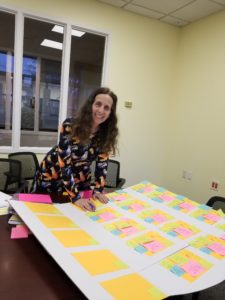
#1: Change Your Environment
I do my book coaching, teaching and much of my editing from my in-home office that doubles as a guest room.
In winter, I spend even more time in that room where it becomes an entertainment center for watching Netflix or Hulu, phone calls to family (I still prefer a landline) and reading books from the guest bed
I kept putting off writing the chapter summaries for my book proposal and I finally realized, I needed a new environment, both for the change of scenery and to spread out in a big room, surrounded only by my book ideas.
So, I hauled over to the Jamestown Library and took over a conference room, where I could spread out my book and post-it notes and create the outline of my book.

#2: Make Space
When I first thought of mapping my book with post its I couldn’t imagine where in my home office I could find enough space to spread out.
Creative projects often require both physical space and space for one’s psyche.
Today, I spoke to an aspiring author who also felt stuck because of all the different projects in her workspace. In a guided visualization we did together, we asked her creative inner muse how to create the space and her muse responded with the advice to rent a separate studio for her artwork and move that out of the space where she’d be writing her book.
In addition, when she told me that her large whiteboard was half covered by ideas for her podcast, I suggested a separate surface for her outlining and book-related work. Why? Every time she looks at her emerging outline, she’d also see the podcast info. In essence, the podcast would intrude on her “head space” for the book. She agreed.
#3: Get Moving
Sitting still at a computer all day practically guarantees getting stuck at some point. We need movement (and blood flow and breath) to keep our brains functioning optimally. Physical stagnancy creates creative stagnancy.
So, whether you stand up and do jumping jacks, yoga stretches or qigong, or you don your boots and raincoat and go for a walk in the rain or snow, you’ll likely find yourself refreshed and unstuck when you return to your desk.

#4: Be Playful
When we feel the weight of the world on our shoulders, we’re more inclined to feel pressured and stressed. Do these emotions contribute to creativity? Hardly.
When we allow ourselves to be playful in one area of life, we open up to creativity and flow in other areas.
I recently made a playful headdress at the HERA Art Gallery Gala. I put it on just before working on my book and—voila—instant inspiration.
Why does this work? Playfulness is liberating. It helps us go beyond linear thinking and make creative connections we didn’t see before. And once we’re in that creative mindset, we don’t even remember feeling stuck.
#5: Return to Your Vision
In my book writing classes, I noticed a pattern that for many people, if things were going to fall apart, it tended to happen in week 3. “I didn’t write anything.” “I lost my drive.” “I’m stuck.”
Amazingly, I rarely needed to say much because other participants in the class offered what helped them stay on course and unstuck. And the thing I heard over and over was, “Do you read your vision statement daily?”
In week 1 of my Bring Your Book to Life® Program, we start with creating a vision statement for our book—what it will do for our readers, our own work and lives and the greater community or society. I encourage everyone to work on that vision until it feels like a 10 (on the 1-10 scale of inspiration).
Then, I suggest participants read their vision statement daily and also right before sitting down to write.
People find that the vision statement provides focus and clarity:
- You know where you’re heading.
- Your vision statement can guide your artistic decisions (“which path, A or B, better aligns with my vision?”).
- You can use your vision statement to keep you engaged and inspired.
If you read your vision statement and feel uninspired, maybe it’s time to tweak it. Or make a more dramatic change. Your passion in reading it tells you how on target it is.
I find that when writers or other creatives return to their vision statement, it’s often all they need to get back on track—inspired, motivated and creative.
Here’s what one person’s inner muse had to say when her writing practice fell apart and she got stuck.
Visual Artist Uli Brahmst on Creative Process
I asked a few artist friends about their creative process and to share how they use some of the 5 Ways I mention in their work. How do they keep their creativity flowing?
Uli Brahmst, visual artist and President of the Board of Hera Gallery in Wakefield RI shared this:
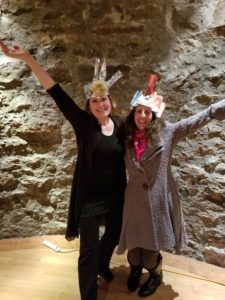
About play: “I clean up my studio… in no time I come across so many intriguing things that I start putting together little collages (they always feel like play to me) and I am on my way.”
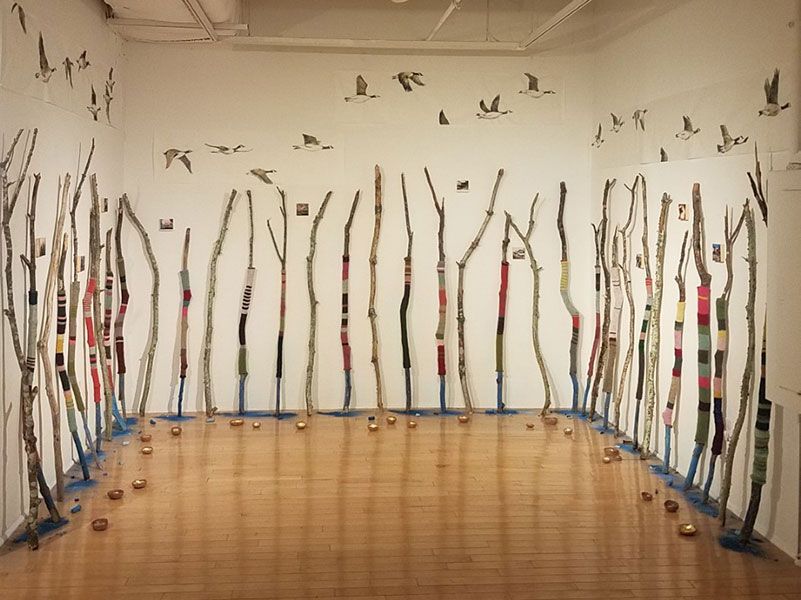
“My problem has never really been to get stuck, I am more on the other end of the spectrum: I operate on overload and need to slow down. I think they might be two faces of the same coin… I really like handwork as a remedy for over stimulation, especially weaving, because the complexity of patterns keeps the mind focused on counting and technical challenges. Going from working freely and intuitively in drawing and collaging to working very structured in weaving is also comparable to a change of environment.
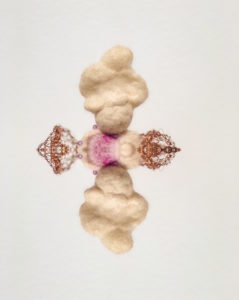
“I also believe in taking our creativity out of the studio into the real world (similarly to taking your yoga off the mat) and find things like installing a show or working collaboratively on bringing art to the community a good way to mix up my studio practice.”
Your Turn to Share
What works for you?

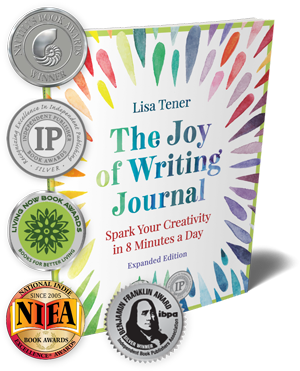

I’m a visual artist. When I’m stuck I put on classical music and do some quick watercolor sketches. The key is quick. Limit the thinking and go into the creative mind
I love that, Anne–quick and creative.
This sounds terrific!
Since I first worked with Lisa several years ago (2008?) I have written and self-published two books and am working on my third. When I feel stuck, I find that reading (or listening to) inspirational or motivational things really helps. Stretching, breathing, meditation and walks in nature really help. Working with my students via group webinars really sparks my fire! And sometimes, I just call out to the Universe for help!
Great tips, Lori! And good luck with book #3!
Find people who are at the same point in their writing career as you and meet up regularly to read each other’s work and give one another feedback. Cultivating a community of peers can be invaluable, especially when you’re trying to complete an ambitious project like a novel for the first time.
Great advice, Casie.